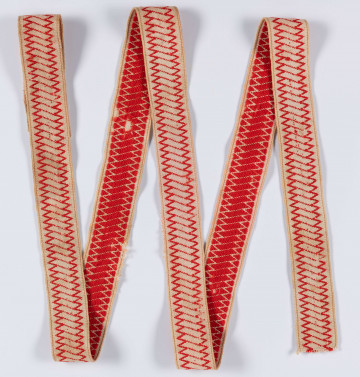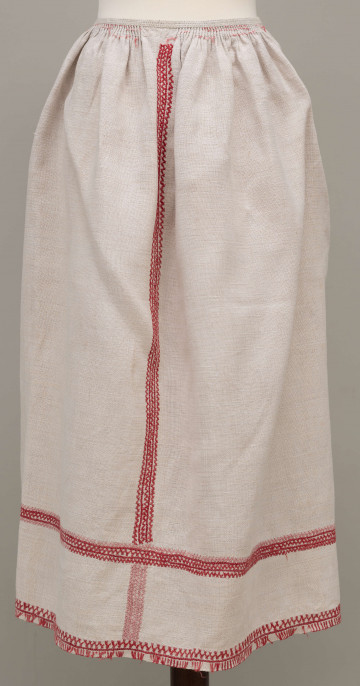
Leather boots `tyszowiaki`
1910 — 1930
National Museum in Lublin
Part of the collection: Folk craft of the Lublin Region (19th/20th c.)
The leather shoes were made before 1914 in the village of Bukowa. They were hand-made from cowhide, which was bought at nearby markets at Jewish stalls where heaps of leather were lying around for clogs. A rectangle slightly larger than the foot length was cut out and sewn in the middle with leather straps in the front to cover the whole toe. The same strap was sewn around the edges, and shorter sides were joined with it at the heel. After sewing, the leather was moistened to dry into the right, comfortable shape for the foot. Two holes were drilled in each side, and hemp rope or thong was threaded through it to fasten the shoe to the leg. It was crossed around the calf and tied below the knee. These shoes were comfortable and relatively cheap, and several pairs were produced at a time. In spring and summer, people usually walked barefoot. Straw was placed inside the shoe on cold days, and the foot was wrapped in ‘onuca’. In winter, several ‘onucas’ were put on, and during severe frosts, the top layer of the shoe was soaked in water to form an additional insulating layer after freezing. The footwear was commonly worn in the southern part of the Lublin region until the first half of the 19th century, and in the Biłgoraj area, even for festive dress, until the end of the 19th century.
Author / creator
Dimensions
cały obiekt: height: 25 cm, width: 6 cm
Object type
footwear
Technique
own
Material
natural leather
Creation time / dating
Creation / finding place
Owner
The National Museum in Lublin
Identification number
Location / status

1910 — 1930
National Museum in Lublin

1890 — 1910
National Museum in Lublin

1901 — 1950
National Museum in Lublin
DISCOVER this TOPIC
National Museum in Lublin
DISCOVER this PATH
Educational path